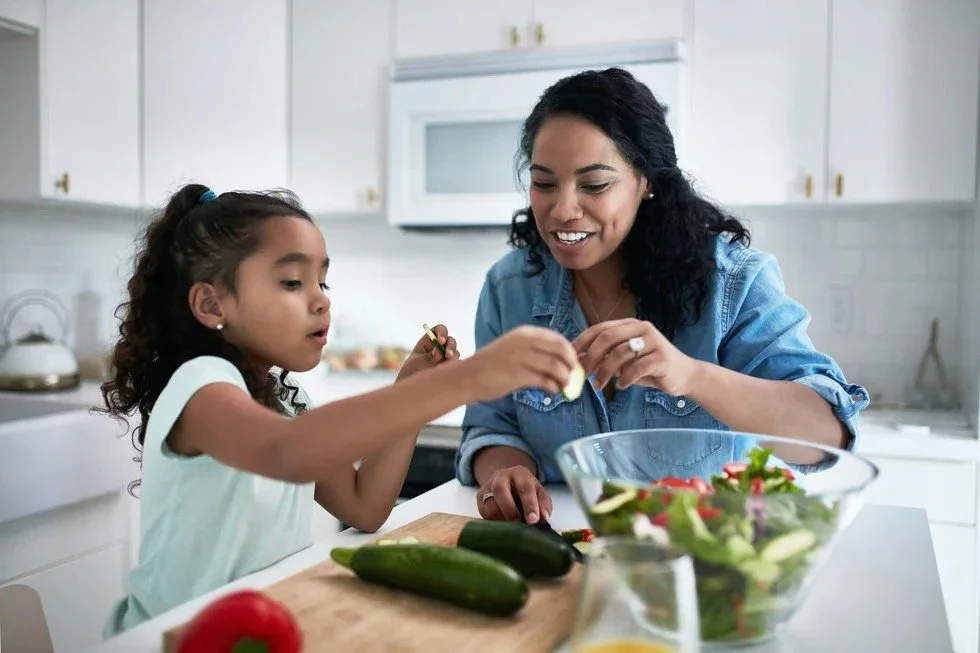Your Kids Are Watching: How Your Attitude Shapes Theirs
Whether we realize it or not, our children are always watching…listening….and learning from us—especially when it comes to how we talk about health, movement, and our bodies. At Organización de Amigos, we know that kids don’t just learn fitness in after-school programs—they learn it at home, too.
You don’t have to run marathons or lift heavy weights to set a powerful example. What matters most is your attitude toward movement and how you speak about it around your child.
Modeling Matters More Than Perfection
Research shows that parental modeling plays a key role in shaping a child's beliefs about physical activity and health (Gustafson & Rhodes, 2006). When children see adults moving their bodies with intention—whether it’s walking the dog, stretching, or dancing in the kitchen—they internalize the idea that movement is normal, joyful, and valuable.
Even more importantly, they notice how we talk about fitness. Saying things like, "I have to work out because I ate too much," can teach children to associate exercise with punishment or guilt. On the other hand, saying, "Moving my body helps me feel strong and happy," fosters a positive relationship with wellness.
Attitude Shapes Motivation
When parents approach fitness with curiosity, patience, and self-compassion, children are more likely to adopt an intrinsic motivation to be active—meaning they want to move because it feels good, not because they’re told to (Edwardson & Gorely, 2010). Kids who grow up in environments where movement is normalized are also more likely to remain active into adolescence and adulthood (Telama et al., 2005).
Even if a parent isn’t athletic or able to participate in structured exercise, encouraging words and supportive behavior go a long way. Ask about your child’s class, celebrate their effort, and show interest in their milestones—even if you’re not doing burpees with them.
Wellness Isn’t Just Physical
Modeling a healthy attitude also means taking care of mental and emotional health. Prioritizing sleep, choosing nourishing foods, managing stress, and speaking kindly about your own body can help children develop a holistic view of wellness. Research has found that parental stress and attitudes about health can influence both physical and emotional development in children (Anderson & Whitaker, 2011).
What You Can Do—Starting Today
Use positive language about your body and movement.
Celebrate effort over appearance or performance.
Create shared moments of movement (a walk, a dance party, a family stretch).
Stay curious—try new things, even if they feel awkward at first.
Show up—cheer them on, ask questions, and be proud of them.
Your child doesn’t need a perfect parent. They need one who tries, who supports, and who understands that every small action models something meaningful.
At Organización de Amigos, we believe wellness starts with connection—and you are an important part of that connection.
References (MLA format)
Anderson, Sarah E., and Robert C. Whitaker. “Household Routines and Obesity in US Preschool-Aged Children.” Pediatrics, vol. 125, no. 3, 2011, pp. 420–428.
Edwardson, Charlotte L., and Trish Gorely. “Parental Influences on Different Types and Intensities of Physical Activity in Youth: A Systematic Review.” Psychology of Sport and Exercise, vol. 11, no. 6, 2010, pp. 522–535.
Gustafson, Samantha L., and Ryan E. Rhodes. “Parental Correlates of Physical Activity in Children and Early Adolescents.” Sports Medicine, vol. 36, no. 1, 2006, pp. 79–97.
Telama, Risto, et al. “Physical Activity from Childhood to Adulthood: A 21-Year Tracking Study.” American Journal of Preventive Medicine, vol. 28, no. 3, 2005, pp. 267–273.


